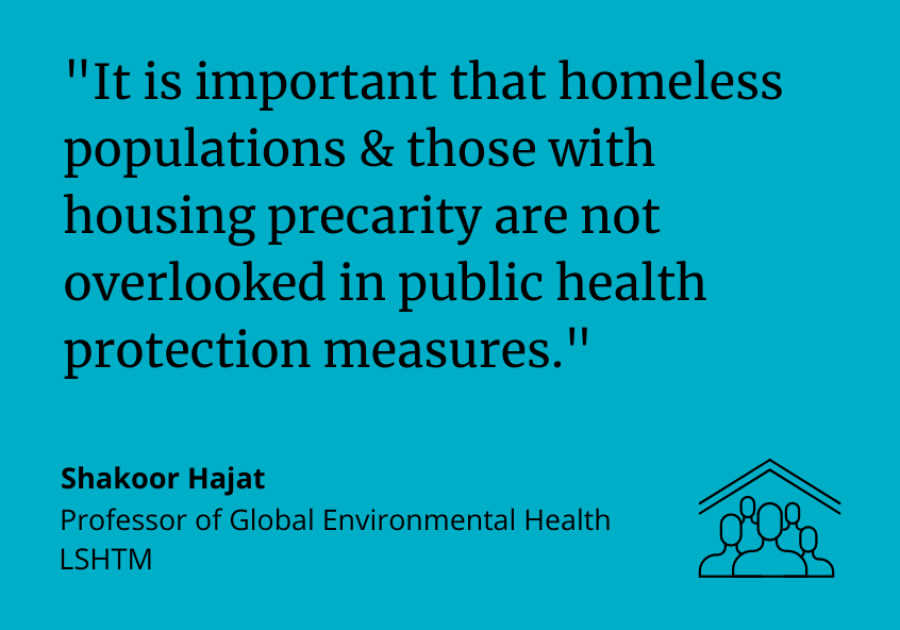Hotter temperatures linked to increased risk of hospitalisation in London’s homeless population
30 June 2023 London School of Hygiene & Tropical Medicine London School of Hygiene & Tropical Medicine https://lshtm.ac.uk/themes/custom/lshtm/images/lshtm-logo-black.png
London’s homeless population are at a greater risk of being hospitalised as temperatures induced by climate change rise, suggests a new study.
In an almost decade-long analysis of the city’s homeless population, which represents at least 30% of the homelessness population in the UK, individuals were around 35% more likely to be admitted to hospital when daily temperatures were 25°C compared to 6°C.
Cold temperatures did not impact hospitalisation rates, although more extreme wintry weather such as snowfall and rainfall were not studied.
According to the research team, led by the London School of Hygiene & Tropical Medicine (LSHTM), these findings highlight the particular vulnerabilities of this population to climate-induced warming, even at moderate temperatures.
They suggest that authorities should focus on preventative measures, whilst considering also reframing the minimum thresholds used to activate emergency interventions, such as the Severe Weather Emergency Protocol (SWEP), which in the summer may only be implemented once temperatures reach 25°C.
The findings are published in the American Journal of Public Health.
Like the rest of the world, the UK is experiencing more unusual weather patterns as a result of climate change. Although people who lack adequate shelter are particularly vulnerable to severe weather events, there has been little research examining the specific impacts of climate-induced warming on the health of these individuals.
In this study, researchers analysed how many people were admitted as emergency inpatients to hospitals in London every day between 2011 and 2019 and who were also recorded as homeless, either because they had stated that they had no fixed home when filling out their address or had been identified as homeless by a doctor. They then correlated this with Met Office data on daily maximum and minimum temperatures after adjusting for underlying seasonal patterns in the hospital data.
Almost 150,000 emergency inpatient admissions were recorded between 2011 and 2019 having no fixed home and over 20,000 for those whom a doctor had identified as being homeless. The authors emphasise that whilst an increasing trend in the number of homeless hospitalisations during the study period mirror increases seen in the general population, the city also saw a rise in rough sleepers during this time.
Importantly, higher temperatures influenced an individual’s risk of being admitted to hospital, with an approximately 35% increased chance of this happening at 25°C compared to 6°C, the minimum temperature at which individuals were admitted to hospital in this study. Between 14.5 and 18.9% of admissions could be attributed to temperatures above the minimum temperature depending on the definition of homelessness used. These risks are greater, the authors emphasise, than figures reported for the general population previously.
In their analyses, the team did not include days where five or fewer people were admitted to hospital to preserve patient anonymity. They did however highlight that this was only 1.8% of the days studied. Using two definitions of homelessness also helped reduced under-reporting introduced by doctors only recording someone as homeless if it was clinically relevant as a cause for their admission.
As there was no increased risk of hospitalisation observed with low temperatures, likely the authors say as a result of organisations and individuals being better prepared for winter weather, they suggest prioritising efforts to address homelessness during hot weather instead of cold.
According to the team, local authorities should not wait for extreme weather conditions to take action to protect people who are experiencing homelessness.
Shakoor Hajat, lead author and Professor of Global Environmental Health at LSHTM, said: “Our work highlights the particular climate vulnerabilities in people experiencing homelessness. More research is needed on the ways in which climate change is contributing to homelessness globally. It is important that homeless populations and those with housing precarity are not overlooked in public health protection measures. The new UK guidance to support homeless groups during hot weather issued by the UKHSA as part of its new Adverse Weather and Health Plan is very timely.”
Publication
Hajat et al., ‘Ambient Temperature and Emergency Hospital Admissions in People Experiencing Homelessness: London, United Kingdom, 2011–2019' The American Journal of Public Health. DOI: 10.2105/AJPH.2023.307351
Our postgraduate taught courses provide health practitioners, clinicians, policy-makers, scientists and recent graduates with a world-class qualification in public and global health.
If you are coming to LSHTM to study a distance learning programme (PG Cert, PG Dip, MSc or individual modules) starting in 2024, you may be eligible for a 5% discount on your tuition fees.
These fee reduction schemes are available for a limited time only.